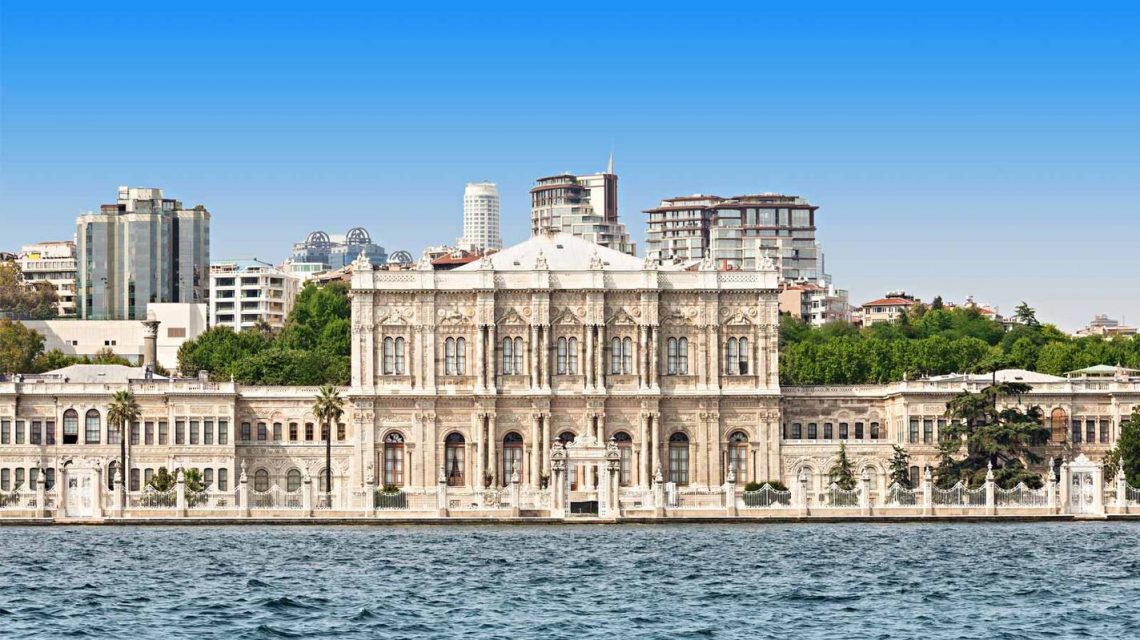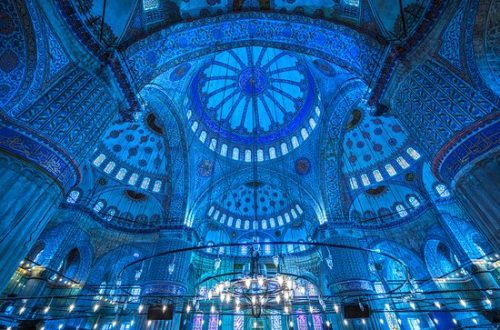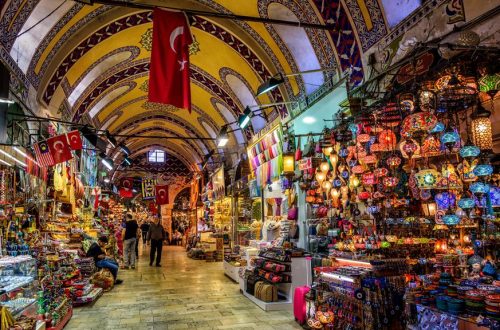
Dolmabahce Palace
Dolmabahce Palace: a synonym for Ottoman opulence?
The Dolmabahce Palace is one of the most magnificent structures in Istanbul.
It was built as the successor to the 600-year-old Topkapi Palace.
Back then, the Ottoman sultans wanted a palace modelled on the contemporary European rulers.
With the Dolmabahce Palace, they created a spectacle in Istanbul that can easily compete with palaces like Versailles and Schönbrunn.
Since its completion in 1856, the 600-meter-long Dolmabahce Palace has been one of the most striking structures along the banks of the Bosporus.
Only a white lattice fence separates the palace from the sea and the passing Bosporus ferries. From them. you can catch a view of the front park area of the palace, the selamlik and harem. You can only see the real splendour of these buildings from the inside.
Did people in the 19th century know about the magnificent interior of the Dolmabahce Palace?
The Dolmabahce Palace was built at a time when the average citizen in the Ottoman Empire was not doing very well. The war which raged between the crumbling Ottoman Empire and Russia over the Crimean peninsula had claimed many victims.
Construction work on Dolmabahce Palace continued unabated during the war. The sultan used 14 tons of gold leaf to decorate the palace walls.
The banisters in the entrance hall are made of pure crystal. The walls have been decorated with hundreds of handmade silk carpets …
The largest chandelier in the world at the time hangs in one of the rooms. Legend has it that the chandelier, which weighs 4.5 tonnes and is equipped with 750 lamps, was a gift from Queen Victoria.
Other sumptuous gifts from the ruling houses of Europe can be found throughout the palace.
Do you think that the people of that time imagined that the Sultan lived in a palace with 44 halls, 6 Turkish baths and 285 other rooms? And, above all: what did people back then think about it? Especially when we consider that the incredible splendour of the Dolmabahce Palace was created while the Crimean War was in full swing?
The magnificent interior: the palace’s selamlik and harem
The harem of the palace: home of the mother, wives and lovers of the Sultan
The sultan’s female relatives, women, lovers, the sultan’s mother, servants and eunuchs lived in the harem of Dolmabahce Palace. The separated palace area is located in the northern part of the palace complex. It can be recognized by the pink coloured walls.
The palace guides always tell stories about extravagant celebrations, women who have braided each other’s hair and who sat in sewing circles inside the harem.
Books dealing with life in the harem tell different stories about life in the imperial harem of Dolmabahce Palace. It is also a story about slaves, extreme jealousy and sexual exploitation.
The Selamlik: home of the men and official reception wing
The selamlik was the official reception wing and home of the men in the palace. It stands at the southern entrance of the palace complex.
The entire design of the exterior and interior of the Selamlik is more splendid than in the harem. In it, you can really recognize the extreme luxury of the Dolmabahce Palace.
In short, everything in the reception rooms of the palace is designed to impress guests.
The park of the Dolmabahce Palace overlooks the Bosporus
“Dolmabahce Palace” translates from Turkish as “Palace of filled gardens” or “Heaped garden”.
You can choose yourself which name you like better.
A raised garden somehow fits better.
There used to be a port on the same site as the palace. It was piled up decades before the palace was built to create a park for the sultan.
The park at the front of the palace is simply designed. A lawn separates the space between the palace and the white iron fence on the Bosporus. The fence is only interrupted by gates to the small ship landing stages.
The garden of the harem, protected from view, is a lot nicer than the park in the front of the palace. You will find various sculptures, park benches, fountains and flowers in it.
It is protected from the gaze of curious onlookers on all sides. The north and east of the park belongs to the harem.
On the west side, a high wall separates the palace garden from the normal streets of Istanbul. Even within the palace complex, the garden was protected from the eyes of unauthorized persons.
This is ensured by a small wall between the garden of the harem and the rest of the palace complex.
The Palace in the 20th Century: Ataturk’s Deathbed and the Museum of Pictures & Sculptures
With the end of World War I, the Ottoman Empire came to an end. Nevertheless, it took until 1923 for the Sultan to be fully expelled from the newly founded Republic of Turkey.
This action was promoted by the founder of the Turkish Republic: Mustafa Kemal Ataturk. The Dolmabahce Palace was his place of residence until the capital of Turkey was moved to Ankara. Even after that, he was often in the palace.
In 1938 he died in a simple room in the Dolmabahce Palace. After his death on November 10, 1938, the entire palace complex was converted into a museum and was opened to the public.
Ataturk lived in a very simply furnished room in the palace. Perhaps he was not so fond of the overly ornate, gold-decorated rooms of the Dolmabahce Palace.
The furnishings of his room has not been changed. For patriotic Turks, the room in the Dolmabahce Palace, along with the Ataturk Mausoleum in Ankara, is one of the most important sights in Turkey.
Tips for visiting the palace
The easiest way to get to Dolmabahce Palace is by tram line T1. Drive to their final stop Kabatas and from there, walk 5 minutes north to the entrance of the palace park.
The palace park can be visited free of charge.
The entrance to the interior of the palace faces the Bosporus. You have to walk halfway down the Dolmabahce Palace to get there.
The queues at the ticket office are usually very long. You should therefore plan to visit the palace in the morning.
You can only buy the entrance ticket in Turkish Lira. So be sure to change a few euros into lira beforehand.
Admission to the selamlik costs 20 TL and for the harem you will have to pay another 20 TL.
Alternatively, you can book a guided tour of the Dolmabahce Palace including entrance ticket, pick-up and drop-off at your hotel with Get your guide.
Reader’s question: What do you think about the Dolmabahce Palace? Is it a unique sight or a symbol of extreme opulence by the Ottoman rulers?




